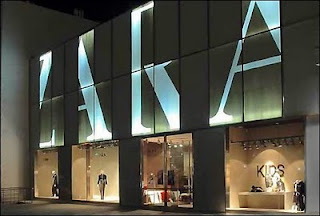
The global economy is dancing all over the scoreboard and the people who have to keep up with twinkle toes – stock brokers, bankers, economists, business-owners – all have their hands full. Everyone is coming out with a set of numbers and studying them for us - laypeople. Motilal Oswal has also done the same but they have come out with a wealth creation study which makes for interesting reading.
This report looks at the top 100 companies who have added atleast Rs 1 billion to their market capitalization over a period of 5 years – 2004-09 – that was reviewed. The report also aims to gauge by when India will hit the next trillion dollars (NTD) high note again after having done it for the first time in the financial year 2008. But the next NTD is predicted to be created a lot quicker – in the next 5-6 years - if India continues to grow nominally at 12%-15% per annum and at the current US$/INR rates.
In the run-up to this NTD era, the report sets down the criteria, by which Indian companies will be significantly adding to their bottomline as well as your portfolio, if you held on to or bought their stocks. These companies all enjoy three kinds of entry barriers and have great managers helming them:
1. Demand-side includes customer captivity due to a strongly differentiated product/brand, force of habit or high switching costs, including the difficulty of searching for substitutes. These brands enjoy strong distribution network. Demand-side entry barriers such as trusted brands are intangible and typically result in firms enjoying very high return on capital.
2. Supply-side entry barrier mainly arise from the company being the lowest
cost provider of goods/services in the category due to one or more of the following:
a. Patent protection for products and/or production processes; and
b. Privileged access to critical inputs (eg captive ore mines).
3. Economies of Scale
4. Great management
So, which companies made the grade based on the above selection process? Here they are:
- Hero Honda Motor because it’s a market leader.
- Maruti Suzuki because it has appropriate product mix with the widest distribution and service network.
- Mahindra & Mahindra because it’s a market leader in UVs and tractors with an excellent track record of innovations.
- BHEL because it enjoys near monopoly in thermal power plants.
- Larsen & Toubro because it’s the preferred engineering/construction company for complex projects.
- HDFC Bank (in private sector) because it’s a high brand equity with the most consistent performance track record.
- State Bank of India (public sector) because it’s the largest bank with the highest reach and which offers play on insurance as well.
- CRISIL because it is the No.1 in India and belongs to the group of global No.1, Standard & Poor.
- HDFC because it is the long-standing market leader with lowest processing costs.
- Dabur India because it enjoys strong positioning in the ayurveda / herbal products platform.
- Nestle India because it’s a near monopoly in instant noodles and infant nutrition.
- Mundra Port because it’s one of the largest ports on the Gujarat coas.
- Sun TV because it has dominant market share in South India.
- Pantaloon Retail because it is a market leader by far and enjoys significant early mover advantage.
- Bharti Airtel because it has the highest market share, lowest cost and is a well-recognized brand.

What also emerged in this study was that:
• Value migrates from basic spend to discretionary spend categories.
• Winner categories emerge when demand hits the J-curve – this means that when product prices match a large section of the customers’ affordability level.
• The categories which can become large in relation to the economy emerge winners.
• Consolidated categories will benefit more than fragmented ones.
Some 66 companies with entry barriers created Rs 8,314 billion between 2004-09. The remaining 34 companies with no or low entry barriers accounted for Rs 1,323 billion in the same timeframe.
Here are some of the other salient points:
• The sensex earning per share (EPS) will grow up to 29% in the early FY11. Beyond this period, it will revert to a median of 15%-20%.
• Interest rates may remain at the same level or may move higher.
• The highest wealth destroyer industries between 2004-09 were: Others – 24%, Oil & Gas – 17%, Banking & Finance – 16%, Auto – 13%, Pharma – 12%, IT – 11%, Metals – 6%.
• The highest wealth destroyer companies in the same time period (in the order mentioned) were: Ranbaxy, IOCL, Tata Motors, ICICI Bank, HPCL, Satyam Computer, Oriental Bank, Tata Steel, Reliance Infrastructure and MTNL.

• Wealth creating companies were mostly new-blood firms that were around less than 40 years. For eg. There were 60 companies that had been around for only 40 years and they had created wealth amounting to Rs 6,700 billion. While the older firms of 50 years and above (there were 40 of them) had created only Rs 2,917 billion between 2004-09.
• 30 public sector units (PSUs) at one time were contributing almost 50.6% of the wealth between 2000-05. After the phased out divestment process, 16 PSUs contributed 27% between 2004-09.
• The best performing PSU sectors were mining & metals (37%), engineering (25%) followed by oil & gas (23%).
• 43 MNCs created a high of 50% of the wealth in the country between 1994-99 and it dropped to 2% (by 8 companies) between 1999-2004. From 2004-09, around 23 companies made 14% of the wealth.
• The best performing MNC sectors were FMCG (63%), Engineering (13%) and Automobiles (10%).
• The private sector created 73% of the wealth – by 84 companies in 2004-09.
The Fastest Wealth Creators were: Unitech, Areva T&D, BF Utilities, Opto Circuits, NMDC, Shri City Union, United Spirits, Jindal Steel, Sterling International and Chettinad Cement.
The Biggest Wealth Creators were: Reliance Industries, Bharti Airtel, BHEL, NMDC, ONGC, ITC, Infosys, Larsen & Toubro, SAIL and HDFC.
Consistent Wealth Creators - 2005 to 2009
Pharma
Cipla (4)
Dr Reddy's Lab (3)
GSK Pharma (2)
Piramal Health. (4)
Ranbaxy Lab (4)
Sun Pharma (2)
FMCG
Asian Paints (3)
ITC (5)
Nestle India (1)
Others
Hero Honda (5)
HDFC (5)
HDFC Bank (1)
IT
Infosys (3)
Wipro (3)
Satyam (2)
Others
Reliance Inds (2)
Ambuja Cement (1)
Number in brackets shows how many times these companies appeared in the top 10 list.
For a more detailed study, take a look at the report here:
http://www.motilaloswal.com/MOSL/uploadedFiles/MOSL/Knowledge_Center/Wealth_Creation_Study/Download_Reports/14thWCS.pdf
 Every other day or so, going to a coffee shop to unwind and enjoy rich, creamy coffees is what almost anyone can do these days. With Cafe Coffee Day, Barista, Starbucks, DiBella and Costa outlets present in every nook and corner, this is a convenience anyone can indulge in.
Every other day or so, going to a coffee shop to unwind and enjoy rich, creamy coffees is what almost anyone can do these days. With Cafe Coffee Day, Barista, Starbucks, DiBella and Costa outlets present in every nook and corner, this is a convenience anyone can indulge in.






